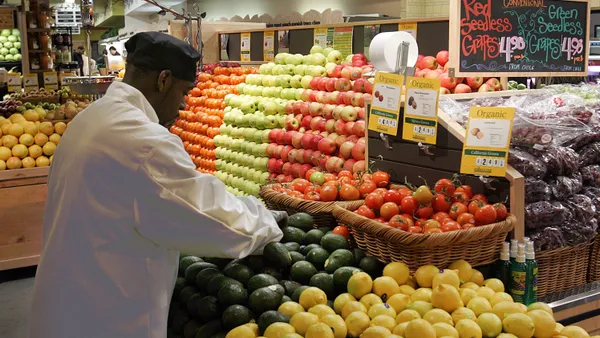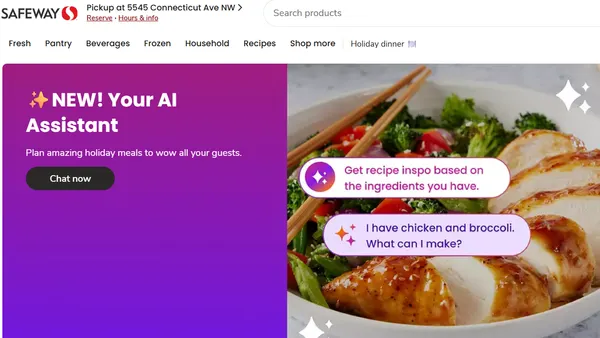Retail Media Is Exploding
Retail media promises billions in new revenue, but for grocers, the real test is whether their data can deliver. By 2025, RMN revenue is projected to hit $176.9 billion globally, overtaking combined TV and streaming revenues and accounting for 15.9% of total ad spend (GroupM, This Year Next Year 2024). For grocery retailers running on razor-thin margins, this feels like salvation.
But there’s a hidden risk: without fixing the cracks in their data foundation, grocers could see this historic opportunity slip through their fingers. Retail media may promise billions, but poor data could leave retailers underdelivering for both CPG partners and their own profitability.
The Data Trust Gap
In my conversations with grocery executives, one challenge comes up repeatedly: their data is fragmented across legacy systems. Loyalty, POS, eCommerce, and marketing systems don’t speak to one another. As a result, building a unified customer view becomes nearly impossible.
Even when retailers do consolidate their data, many leaders hesitate to rely on it. Some fear misinterpretation, while others admit they lack the training to translate data into action. That hesitation means retail media campaigns often fall short of delivering the precision brands expect.
This mirrors broader industry research. The IAB’s State of Data 2025 report found that nearly two-thirds of agencies, brands, and publishers face major challenges with data quality, security, and fragmentation when adopting new tools like AI. And despite this, only half are taking concrete steps to address those gaps. Without investment in clean, transparent, and unified data, any technology built on top of it, whether AI or retail media, will underperform.
No wonder brands remain cautious. If retailers can’t prove their data is reliable and transparent, CPGs will keep funneling dollars to established channels like Google, Meta, or TV, where measurement is more mature.
Data Done Right Pays Off
When grocers get it right, the results are undeniable. McKinsey reports that personalization can reduce customer acquisition costs by up to 50%, lift revenues by 5–15%, and increase marketing ROI by 10–30%.
I’ve seen it firsthand. A regional grocer used advanced customer intelligence to identify households most likely to respond to a healthy-living campaign. Instead of blasting discounts broadly, they targeted precisely. The result? Lower promotional waste, higher redemption, and a CPG partner that saw measurable sales lift.
And it’s not just the largest grocers that can benefit. Smaller regional chains, even those with just a handful of stores, are realizing their data is valuable. While it may not rival the volume of a top-five national player, niche data can provide unique insights brands are willing to pay for.
This is the formula: clean, unified data → smarter targeting → measurable results. Everybody wins; the shopper, the brand, and the retailer.
Four Imperatives for Grocery
If retail media is to cross from buzzword to bottom line, grocers need a playbook. Here are the four imperatives I see as critical:
- Understand: Integrate data across loyalty, POS, eCommerce, and digital platforms to build a full view of the customer lifecycle.
- Manage: Keep customer profiles accurate and dynamic. Stale data leads to stale results.
- Activate: Translate intelligence into action by creating precise audiences and compelling campaigns that brands can back.
- Orchestrate: Deliver these experiences consistently across media, loyalty, and promotional channels, while giving CPGs transparent measurement and attribution.
Notice what’s missing? A focus on selling more ad space. That’s the easy part. The real value, what brands and retailers need, is making retail media trustworthy and impactful.
A CEO’s Perspective
I’ve seen industry trends come and go. But this moment feels different. Retail media has the potential to reshape grocery economics, for good. Provided we get the basics right.
The IAB found that 51% of brands are already concerned about the lack of transparency in how partners use emerging tools like AI. The lesson for retail media is clear: without trustworthy data practices, transparency, and activation, this gold rush could quickly lose momentum.
The grocers who treat data as merely a byproduct will struggle. They’ll be stuck auctioning off cheap impressions and under constant discount pressure. The grocers who treat data as their most valuable asset will thrive. They’ll become indispensable partners to CPGs, trusted by shoppers, and leaders in a new era of profitability.
The choice is simple: retail media can be a shiny add-on, or it can be the growth engine that carries grocery forward. The difference comes down to this: data quality and activation..
Summary of Key Citations
- GroupM — Global End-of-Year Forecast 2024: Global advertising revenue surpassed $1 trillion in 2024, growing 9.5% year-over-year, and is expected to climb another 7.7% in 2025 to reach $1.1 trillion. Digital formats continue to drive this acceleration (GroupM, End-of-Year Forecast 2024).
- GroupM — This Year Next Year 2023: Retail media is projected to reach $176.9 billion globally by 2025, overtaking TV and streaming revenues and accounting for 15.9% of total ad spend (GroupM).
- McKinsey — Personalization Impact: Personalization can reduce customer acquisition costs by up to 50%, lift revenues by 5–15%, and increase marketing ROI by 10–30% (McKinsey).
- IAB — State of Data 2025: Nearly two-thirds of companies face challenges with data quality, security, and fragmentation when adopting AI, yet only half are taking steps to address them. In addition, 51% of brands cite transparency concerns with how partners use AI, underscoring the broader industry trust gap that parallels retail media.










